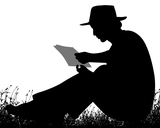What's the story behind your book?
I realize that the idea of a series of calypso-inspired noir novels is a bit unusual. In the USA and across many parts of the world, calypso is an old musical genre from a bygone era, associated with men in straw hats, with their shirt tails tied in a knot at their waists, singing sweet, catchy, childlike melodies under coconut trees, maybe in high key Technicolor movies. But if you listen to the calypsos of the 1930s and 1960s especially (periods of great social upheaval in the Caribbean), you would be confronted by a topical genre of music that pulls no punches in its commentary on the local issues and politics of Trinidad & Tobago (the land of its birth), and indeed the whole English-speaking Caribbean. The melodies are often not sweet at all, but rather dark and haunting, in minor keys, but always with an infectious rhythm. It's fairly easy to get our hands on the early calypsos today to hear what I mean. From the 1930s-50s the Smithsonian collected hundreds of recordings by master composers like Atilla the Hun, King Radio, the Mighty Growler, etc. and offers anthologies of these clever, biting, amusing records for sale.
The idea of 'calypso noir' per se first occurred to me somewhere between 2003 and 2005, when I was reading Keith Warner's book Kaiso!: the Trinidad Calypso, a Study of the Calypso as Oral Literature. There was a chapter in that book called "Male/Female Interplay in the Calypso" that made me realize that there were countless similarities between noir fiction and the classic calypsos of the 1920s through 1970s. The treacherous gender relations described from a predominantly male, and very anxious, viewpoint; the distrust and betrayal; the witty repartee; the dry humor and sometimes cynical descriptions of things and people. It was at once so calypso and so noir…and so uniquely something from the Americas. The idea started percolating in my head to combine noir and calypso in some way.
I had spent my university years reading all of Dashiell Hammett, most of Ross MacDonald and all but one of Raymond Chandler's Marlowe novels (because I absolutely dreaded the idea of coming to the end of the very last Chandler book - it still sits on my bookshelf, un-cracked). By the end of graduate school, I had also accumulated miles and miles of old calypsos on tape, CD and vinyl. Calypso and noir were now living together on the shelves of my study and in the corners of my mind.
In 2012 I walked out of a teaching job that was going nowhere, started editing my Ph.D. dissertation on the pre-Columbian Caribbean for the nice folks over at University Press of Florida, and began banging out a calypso noir novel.
It was just an experiment at first, to see if I could really combine the two and pay tribute to both in a novel that grappled with their shared themes of conflict and distrust. If parts of Gypsy in the Moonlight seem a bit derivative of either calypso or noir, that was in many ways my intention as I set the noir landscape of old Trinidad - a landscape I had never encountered in a book before. I had the example of Walter Mosely to demonstrate that backfilling the noir imaginary past with heretofore unheard voices could indeed be done. But even the derivative parts of 'Gypsy' will seem just a little unfamiliar as the venetian blinds of Los Angeles are replaced by the myriad jalousies of colonial Trinidad's fretwork houses; as a woman's silhouette on the detective's office door is reflected in a silhouette on the Victorian-style frosted glass of French windows; as cheap bourbon meets its match in bottles of estate rum. Of course, there are a lot of surprises too among the genre-familiar and the creeping uncanny. Some of these surprises are straight from my imagination, for dramatic effect. Others are natural results of crossbreeding two unlikely but compatible literary forms.
Caribbean readers will notice that the book takes its title, not from a calypso exactly but from a folk song, a children's song at that. This is a subcategory of the calypso noir experiment in which I evoke lost innocence -the lost innocence of people, islands, continents. Other Calypso Mysteries titles will take up this thread, including the next novel, In a Fine Castle.
For all of my historical research into the World War II period, my analysis of history and noir fiction and my growing connoisseurship of calypso, I have not set out to write a work of "high literature." Noir and calypso are popular mediums. They are read, watched and listened to primarily for enjoyment, not to be analyzed by scholars at conferences and in peer-reviewed journals. I am hoping that the reader won't hold it against me that my own background is among those persnickety desk jockeys.
What motivated you to become an indie author?
While I have two heavily footnoted, cited, illustrated and peer-reviewed non-fiction books in different stages of production at a major, conventional publishing house, I wrote Gypsy in the Moonlight out of curiosity and for my own enjoyment. Smashwords has allowed me to publish this labor of love virtually instantaneously (instead of having to shop it around for a decade, on the side, between my other publishing, teaching and research projects and obligations). I look forward to hearing what people think of my approach to the noir tradition.
Read more of this interview.


